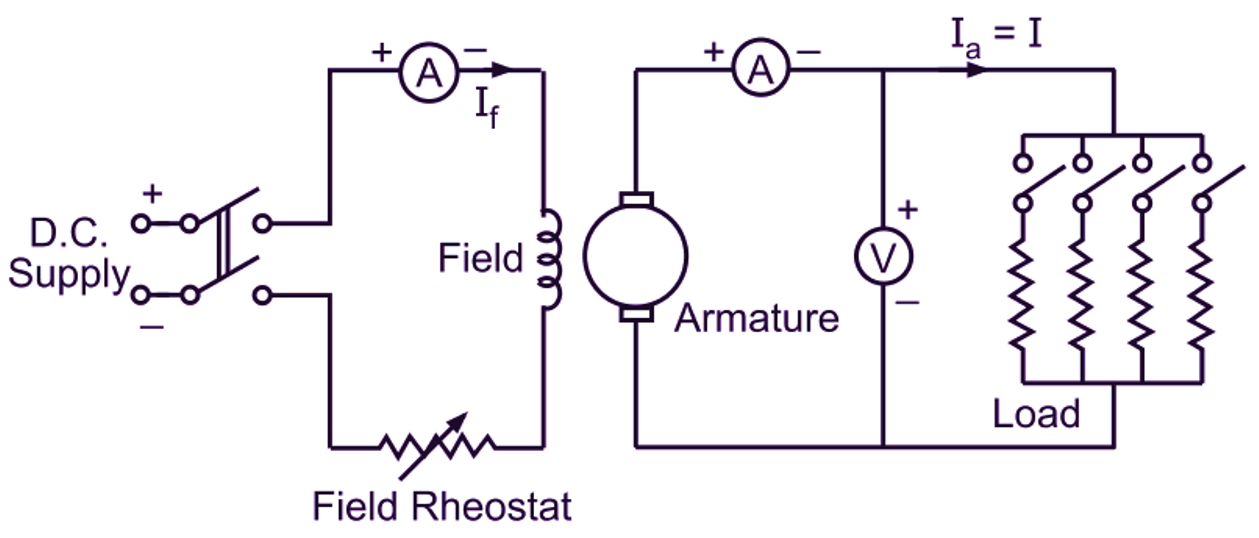External Characteristic
Suitability of a generator for particular application is mainly decided by the nature of its external (or load) characteristic. The important information regarding how the terminal voltage of the generator varies with the load current can be obtained from this characteristic. The external characteristic of a separately excited generator can be experimentally obtained by conducting a load test on it as follows
(a)

(b)
Fig. 1: (a) Load test on a separately excited d.c. generator, (b) Characteristics of a separately excited generator
The connections are made as shown in Fig. 1 (a), the field being connected to a separate dc supply source. The machine is driven at a normal speed with the help of a suitable prime mover and the field current is adjusted to give the rated no-load voltage. As the value of the rated voltage on full load is known from the name plate of the machine, for all practical purposes, it is sufficient to adjust the voltage on no load as equal to or slightly more than this rated value. Since normally the rated no-load voltage of a machine is not known, first the field current is so adjusted that the rated voltage is obtained with full load applied on the machine using a variable loading resistance or a lamp bank. The machine is run for about 20 minutes under this condition so as to allow the field to reach its ultimate operating temperature. The load is then removed. The terminal voltage under this condition being the rated no-load voltage, the corresponding field current is the desired field current in this case. Keeping this excitation and the speed constant throughout, the machine is then again gradually loaded. The terminal voltage (V) and the load current (I) are measured at regular intervals and then plotted so as to obtain the external characteristic as shown in Fig. 1 (b). The characteristic is slightly drooping. As the load current increases, the terminal voltage of a generator falls due to :
- The increased voltage drop is caused by the armature resistance. As
\[\text{V = E – }{{\text{I}}_{\text{a}}}{{\text{R}}_{\text{a}}}\]
- Reduction of main flux and therefore of emf caused by the demagnetizing effect of armature reaction. “The effect of armature flux on the value and the distribution of the main magnetic field (produced by the main poles) of the machine is called armature reaction”.
Internal Characteristic
The internal characteristic of a dc generator gives the relationship between the induced emf (E) and the armature current (la). This characteristic can be easily obtained from the data of the load test conducted on a dc generator. The values of induced emf are obtained by adding laRa drop to the corresponding values of terminal voltage (since E = V + laRa). These values of induced emf are then plotted against the corresponding values of armature current. Internal characteristic of a generator always lies above its external characteristic. Fig. 1 (b) shows the internal characteristic of a separately excited generator with dotted line. It should be remembered that in the case of a separately excited generator, armature current is same as the load current. Hence, by drawing the armature drop (laRa) line and adding its ordinates at different points to the corresponding ordinates of the external characteristic, internal characteristic can also be obtained graphically. Internal or total characteristic of a generator has very little practical importance and is of interest mainly to the designer.